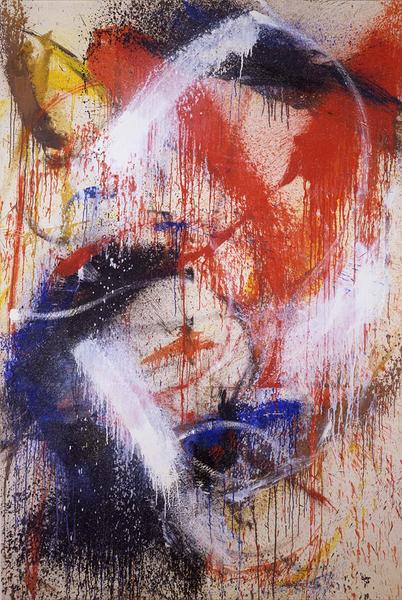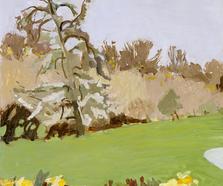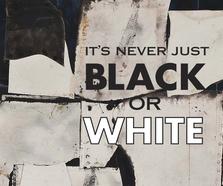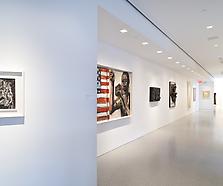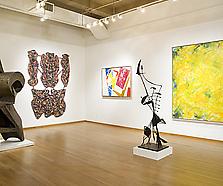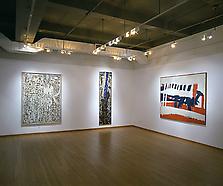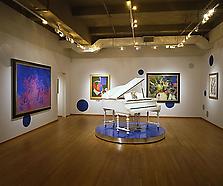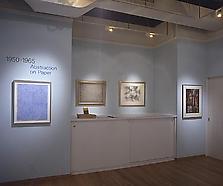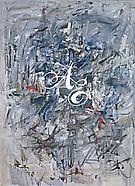“The violence in my ‘60s paintings was there because the violence existed in the man himself. At that period in my life I was always causing trouble. The gesture was part of that violence. I mean, if you hit a canvas with a big brush with a lot of paint on it, you’re going to create an atmosphere of violence, and that’s what I did then. I do not have that outlook now.” *
Born in 1921, Norman Bluhm grew up on Chicago’s South Side and in Lucca, Italy, where his mother’s family lived. An advanced student, Bluhm completed high school with honors when he was sixteen, and from 1936 to 1941, he studied architecture at the Armour Institute of Technology (later Illinois Institute of Technology) with Mies van der Rohe. When the United States entered World War II, Bluhm enlisted and became a B-26 pilot. The war had a profound effect on Bluhm’s life and psyche—he had been injured, and his younger brother, also a pilot, was killed. Although afterwards Bluhm attempted to resume his studies at the Armour Institute, he had lost interest in architecture and found it difficult to fall back into his old life. In 1947, against the wishes of his family, Bluhm decided to become an artist. He moved to Paris and studied at the Ecole des Beaux-Arts and the Académie de la Grande Chaumière with funding from the GI Bill. In Paris, Bluhm met other American abstractionists such as Joan Mitchell and Sam Francis, as well as members of Europe’s artistic and intellectual avant-garde, including Jean Cocteau, Antonin Artaud, and Alberto Giacometti. During the nine years he spent in Europe, Bluhm’s artwork moved away from his initial landscapes inspired by Cézanne and towards abstraction. Although Bluhm lived an ocean away from the epicenter of abstract expressionism, his works of the early 1950s share its gestural brushstrokes, visible paint drips, and pulsating color. When Bluhm returned to the United States in 1956, he settled in New York, where he joined Franz Kline, Robert Motherwell, Ad Reinhardt, Willem de Kooning, and others as a member of the Club—the group of artists, writers, and art dealers who would meet in an apartment at 39 East 8th Street—and became a regular at the Cedar Bar. A year after his arrival in the New York art world, Bluhm had his first U.S. solo exhibition, at the Leo Castelli Gallery.

